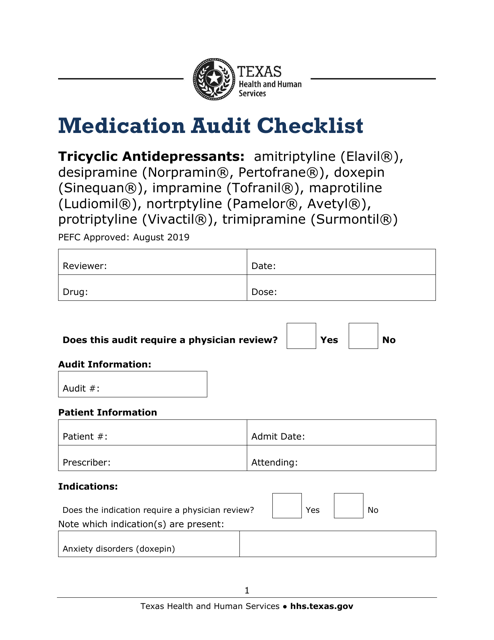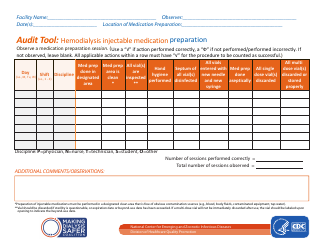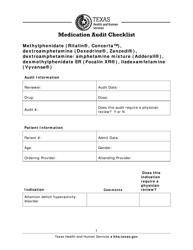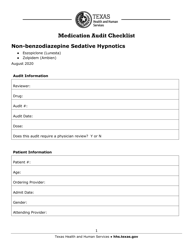Medication Audit Checklist - Tricyclic Antidepressants: Amitriptyline (Elavil), Desipramine (Norpramin, Pertofrane), Doxepin (Sinequan), Impramine (Tofranil), Maprotiline (Ludiomil), Nortrptyline (Pamelor, Avetyl), Protriptyline (Vivactil), Trimipramine (Surmontil) - Texas
Medication Audit Checklist - Tricyclic Antidepressants: Amitriptyline (Elavil), Desipramine (Norpramin, Pertofrane), Doxepin (Sinequan), Impramine (Tofranil), Maprotiline (Ludiomil), Nortrptyline (Pamelor, Avetyl), Protriptyline (Vivactil), Trimipramine (Surmontil) is a legal document that was released by the Texas Health and Human Services - a government authority operating within Texas.
FAQ
Q: What is a medication audit checklist?
A: A medication audit checklist is a tool used to assess the prescribing, administration, and monitoring of medications.
Q: What are tricyclic antidepressants?
A: Tricyclic antidepressants are a class of medications commonly used to treat depression and other mental health conditions.
Q: What are some examples of tricyclic antidepressants?
A: Examples of tricyclic antidepressants include Amitriptyline (Elavil), Desipramine (Norpramin, Pertofrane), Doxepin (Sinequan), Imipramine (Tofranil), Maprotiline (Ludiomil), Nortriptyline (Pamelor, Aventyl), Protriptyline (Vivactil), and Trimipramine (Surmontil).
Q: What is the purpose of a medication audit checklist for tricyclic antidepressants?
A: The purpose of a medication audit checklist for tricyclic antidepressants is to ensure proper prescribing, administration, and monitoring of these medications to promote patient safety and optimal treatment outcomes.
Q: Is the medication audit checklist specific to Texas?
A: No, the medication audit checklist for tricyclic antidepressants can be used in any state or healthcare setting.
Q: Who can benefit from using a medication audit checklist for tricyclic antidepressants?
A: Healthcare providers, prescribers, pharmacists, and other healthcare professionals involved in the management of tricyclic antidepressant medications can benefit from using a medication audit checklist.
Q: What information is typically included in a medication audit checklist for tricyclic antidepressants?
A: A medication audit checklist for tricyclic antidepressants typically includes sections for documenting the indication for use, dosing and titration, monitoring parameters, potential drug interactions, and patient education needs.
Form Details:
- Released on August 1, 2019;
- The latest edition currently provided by the Texas Health and Human Services;
- Ready to use and print;
- Easy to customize;
- Compatible with most PDF-viewing applications;
- Fill out the form in our online filing application.
Download a printable version of the form by clicking the link below or browse more documents and templates provided by the Texas Health and Human Services.











